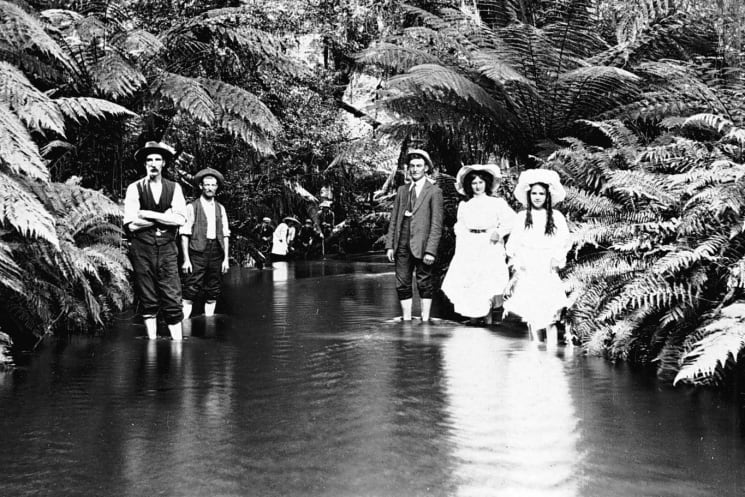
A photograph of people paddling in the Bunyip River c1905.
Those captured include sawmill operator John Freeman and his two daughters, Elizabeth and Millicent, who chose a paddle in the shade to escape the heat.
It is not known who their companions - including those crouched down further downstream - might be.
It seems to be inevitable that when the kids go back to school in February, West Gippsland is hit with a series of long, hot summer days and people take advantage of anything available to stay cool.
However, spare a thought for what was it like for the communities in the early 1900s as they adapted to an Australian climate, that was totally different to their home lands and without today's conveniences.
They were certainly not helped by the late Victorian dress codes that they brought with them.
As this photographs captures, women wore long dresses with several layers of undergarments and lace up boots, whilst the men wore coats and long trousers - no shorts for them.
Hats were a must and, as we know now, are still vital to protect against sun exposure.
If you had money, you could afford light fabrics such as silk and cotton. But, for the working class, it was heavy linen or wool.
If you lived by the sea, a river or even a water hole, you might cool off by having a dip in the water. Although it is hard to image that people actually went for a swim, as the costumes were made of wool and would become very heavy when wet.
Men wore neck to knee costumes and women wore neck to ankle costumes with a woollen skirt fastened at the waist.
Light fabrics were absolutely out of the question because when they got wet, they would cling to the body and the human form would be obvious.
Photograph courtesy of Victorian Museum Collection and information courtesy of Longwarry and District History Group.
The not-for-profit group is dedicated to the history of the 3816 postcode which includes Labertouche, Longwarry North and Modella.
To find out more, visit longwarryhistory.org





